Comments / Questions (39)
![]() LyseRichard wrote:
LyseRichard wrote:
Comment je repars mon tricot une fois que j’ai coupé le fil après l’ajout des 12 mailles pour faire le bas de la cagoule Je n’ai pas trouvé de vidéo à ce sujet
10.05.2025 - 02:52DROPS Design answered:
Bonjour Mme Richard, glissez les mailles de l'aiguille circulaire de gauche sur celle de droite jusqu'à ce que vous arriviez au milieu du dos, puis joignez le fil et continuez A.1 en rond à partir de là. Bon tricot!
12.05.2025 - 07:37
![]() Fay wrote:
Fay wrote:
På mittpartiet står det När arbetet mäter 13-14 cm och nästa varv stickas från avigsidan, maskas det av 1 kantmaska i varje sida = 22-22 maskor på varvet. Men jag har nu maska av första kantmaskan och fortsatte mönster a.1 på 22 maskor men nu fattar jag inte hur jag ska maska av Endast sista kantmaskan? Om jag maskar av som jag vet så blir ju kantmaskan kvar och i stället försvinner sista maska på mönstret a.1
20.01.2025 - 10:17DROPS Design answered:
Hej Fay, kantmasken i den anden side masker du av når du har vendt arbejdet og strikker tilbage :)
22.01.2025 - 14:01
![]() Deborah Laxague wrote:
Deborah Laxague wrote:
Thanks for this fun pattern. I wish I could read the questions in other languages because maybe this has already been asked. It looks to me like you've done some decreases at the corner where the final ribbing that circles the face shifts from the part under the chin to the horizontal parts up the side of the face? I don't see that mentioned in the pattern instructions, do you think it's important?
24.10.2024 - 19:09DROPS Design answered:
Dear Mrs Laxague, we are working here from top down, so that there won't be any decreases after face opening when piece is worked in the round but increases that are worked as explained in A.3 under paragraph NECK. Happy knitting!
25.10.2024 - 07:51
![]() Barbara wrote:
Barbara wrote:
Neck: Started the round at the marker mid-back and continued A1 knit 1 in the stitch below and purl 2 stitches all the way round to the marker. Row 2 for A1 which is purl 2 knit 1 , do I turn my work around and go back in the opposite direction? That will leave a hole, the work will not be joined. Or do I continue A1 as knit 1 in the stitch below and the purl 2 stitches for every row from now on. When do I turn my work to complete the pattern? Is there a video or lesson I can follow?
08.10.2024 - 21:35DROPS Design answered:
See below :)
09.10.2024 - 08:19
![]() Barbara wrote:
Barbara wrote:
Neck: Started the round at the marker mid-back and continued A1 knit 1 in the stitch below and purl 2 stitches all the way round to the marker. Row 2 for A1 which is purl 2 knit 1 , do I turn my work around and go back in the opposite direction? That will leave a hole, the work will not be joined. Or do I continue A1 as knit 1 in the stitch below and the purl 2 stitches for every row from now on. When do I turn my work to complete the pattern? Is there a video or lesson I can follow?
08.10.2024 - 21:32DROPS Design answered:
Dear Barbara, you now work in the round, this means you read all rows in A.1 from the right towards the left; on 2nd row work (K1, P2), on 3rd row work as 1st row (K1 below, P2). Happy knitting!
09.10.2024 - 08:18
![]() Marta wrote:
Marta wrote:
Hello, I was wondering ehat the final dimensions are for the pieces. I would like to block them before assembly, but I am not sure how to. Thanks for the help!
03.10.2024 - 12:38DROPS Design answered:
Dear Marta, the whole piece is worked together; it's not separate parts sewn together. You work one piece and knit up stitches to work the next one. So it's difficult to block this. As you can see, there is no assembly section or sewing section in this pattern. Happy knitting!
06.10.2024 - 14:37
![]() Michele Ragusa wrote:
Michele Ragusa wrote:
I’m wanting to buy yarn for this pattern but don’t seem to see how many yards the pattern calls for. (I’m in the US). I see grams. Can you advise?
28.06.2024 - 17:56DROPS Design answered:
Dear Michele, these patterns are written to support the sales of DROPS yarns, that is why DROPS yarns are listed for materials. You can find how many meters/balls for each yarn under our "yarns" tab. Happy Knitting!
30.06.2024 - 15:28
![]() Jorun wrote:
Jorun wrote:
Hei! Jeg får ikke A1 til å stemme med videoene som viser hvordan strikke patentmaske. Som jeg forstår det, starter A1 på rettsida, men da strikker man patent i en rettmaske, ikke en vrangmaske, som i videoene. Ikke minst i videoen "Hvordan strikke i masken under og hvordan øke 4 masker i 1 maske" vises et diagram som alternerer med tre rette på vrangsida, ikke en rett og to vrange, som i denne oppskrifta. Kan dere forklare?
18.02.2024 - 10:29DROPS Design answered:
Hei Jorun. I videoen strikkes det i masken under forrige omgang og den er en rettmaske (se diagram A.1 og tidspunkt: 0:36, 1:08, 1:42 og 1:56). Første diagramikon i diagram A.1 i videoen og første diagramikon i diagram A.1 i 214-73 strikkes likt selv om forrige omgang i videoen er vrang, så er det i omgangen under det skal strikkes i og den er rett, både i videoen og i 214-37. Videoen viser øketeknikken (4 økte masker) i A.2. I oppskrift 214-73 gjør du samme øketeknikk, men du må følge forklaringen hvordan maskene skal strikkes i 214-73 på neste omgang (i A.3). mvh DROPS Design
26.02.2024 - 11:08
![]() Patricia Gilgan wrote:
Patricia Gilgan wrote:
Do you have a video of this garment
20.01.2024 - 23:07
![]() Sølvi wrote:
Sølvi wrote:
Ønsker å få en bedre beskrivelse av økning A3. Får bare feil antall masker på venstre side av halsen. Dvs altfor mange
10.01.2024 - 14:45DROPS Design answered:
Hei Sølvi. Når du skal strikke omgangen med A.3 bruk maskemarkører mellom hver rapport. Så har du en bedre oversikt. Hvordan det økes kan du se på hjelpevideoen som ligger under oppskriften. Se: "Hvordan strikke i masken under og hvordan øke 4 masker i 1 maske" og se mellom tidspunktet 05:00-05:28. mvh DROPS Design
15.01.2024 - 13:45
Wrapped in Wonder#wrappedinwonderbalaclava |
|||||||||||||||||||
 |
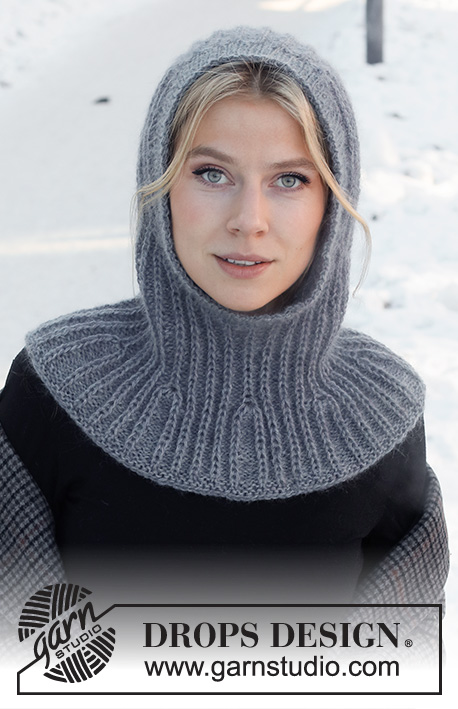 |
||||||||||||||||||
Knitted hat / balaclava in DROPS Alpaca and DROPS Kid-Silk. The piece is worked top down with Fisherman’s rib and ribbed edging.
DROPS 214-73 |
|||||||||||||||||||
|
------------------------------------------------------- EXPLANATIONS FOR THE PATTERN: ------------------------------------------------------- RIDGE/GARTER STITCH (worked back and forth): Knit all rows. 1 ridge in height = Knit 2 rows. PATTERN: See diagrams A.1 to A.3. The diagrams show all rows in the pattern from the right side. CASTING-OFF TIP: To avoid the cast-off edge being tight you can cast off with a larger size needle. If the edge is still tight, make 1 yarn over after approx. each 6th stitch at the same time as casting off; the yarn overs are cast off as normal stitches. ------------------------------------------------------- START THE PIECE HERE: ------------------------------------------------------- BALACLAVA – SHORT OVERVIEW OF THE PIECE: The mid-section is worked back and forth with circular needle from mid-front and backwards. Stitches are knitted up on each side of the mid-section and the piece continued back and forth before stitches are cast on for the neck. The piece finished in the round. A ribbed edge is worked around the face-opening to finish. MID-SECTION: Cast on 24-24 stitches (including 1 edge stitch on each side) with circular needle size 4 mm and 1 strand Alpaca and 1 strand Kid-Silk (2 strands). Purl 1 row from the wrong side. Then continue as follows from the right side: 1 edge stitch in GARTER STITCH on each side – read description above, work A.1 until there are 2 stitches left (7-7 repeats of 3 stitches), work the first stitch in A.1 (so the pattern starts and finishes in the same way) and 1 edge stitch in garter stitch. Continue this pattern back and forth. REMEMBER THE KNITTING TENSION! When the piece measures 13-14 cm and the next row is from the wrong side, cast off the edge stitches on each side = 22-22 stitches. Cut the strand, then work the hood as described below. HOOD: Knit up stitches on each side of the mid-section from the right side as follows: Knit up 25-28 stitches along the one side inside the 1 edge stitch, continue A.1 as before over the 22-22 stitches on the needle and knit up 25-28 stitches along the other side inside the 1 edge stitch = 72-78 stitches. Insert 1 marker at the beginning of the row. THE PIECE IS NOW MEASURED FROM THIS MARKER! Continue A.1 back and forth over all stitches with 1 edge stitch in garter stitch on each side towards mid-front – the pattern should match the pattern on the mid-section. When the piece measures 16-18 cm from the marker and the next row is from the right side, increase on each side towards mid front as follows: 1 edge stitch in garter stitch, work A.1 over the first 3 stitches, A.2A (= 1 stitch), A.1 as before until there are 5 stitches left, A.2B (= 1 stitch), A.1 over the next 3 stitches and finish with 1 edge stitch in garter stitch. Continue this pattern and increase on each side as shown in the diagrams. When A.2 has been completed in height there are 84-90 stitches. Continue working until the piece measures 22-24 cm from the marker – the hat measures approx. 28-30 cm from the middle of the mid-section down. Now cast on stitches for the neck (try the hat on and work to desired length before casting on). Cast on 12-18 stitches at the end of the next row from the right side = 96-108 stitches. Cut the strand and remove the marker. Insert a new marker in the piece, approx. mid-back, inserted in a Fisherman’s rib stitch. THE PIECE IS NOW MEASURED FROM THIS MARKER. Continue working the neck as described below. NECK: Start the round at the marker mid-back and continue with A.1 in the round over all stitches – make sure the pattern matches all the way round. When the piece measures 8-8 cm from the marker mid-back, increase as follows: Work A.3 in the marker-stitch, * A.1 as before over the next 11 stitches, A.3 in the next Fisherman’s rib stitch *, work from *-* a total of 7-8 times and A.1 as before over the last 11 stitches = 128-144 stitches. Continue working until the piece measures 15-15 cm from the marker. Knit 1 round and purl 1 round. Then loosely cast off with knit – read CASTING-OFF TIP! The hat measures approx. 43-45 cm from the middle of the mid-section down. EDGE AROUND FACE-OPENING: Start from the right side at the bottom of the opening, where stitches were cast on for the neck. Knit up 140 to 160 stitches around the opening, inside the 1 edge stitch using short circular needle size 3 mm and 1 strand Alpaca and 1 strand Kid-Silk (2 strands). The number of stitches should be divisible by 2. NOTE: On the mid-section and along the stitches cast on for the neck, knit up 1 stitch in each Fisherman’s rib stitch and 3 stitches between each Fisherman’s rib stitch. Work rib in the round (knit 1, purl 1) for 3-3 cm – make sure the rib matches neatly over the mid-section and the cast-on stitches. Loosely cast off with knit over knit and purl over purl – remember CASTING-OFF TIP. |
|||||||||||||||||||
Diagram explanations |
|||||||||||||||||||
|
|||||||||||||||||||
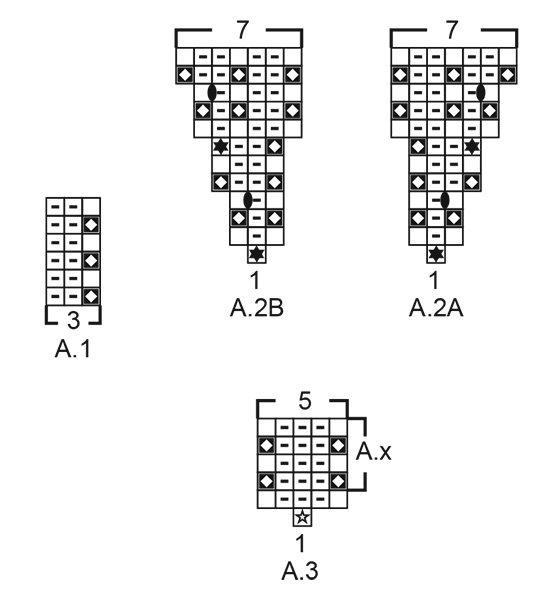
|
|||||||||||||||||||
Have you finished this pattern?Tag your pictures with #dropspattern #wrappedinwonderbalaclava or submit them to the #dropsfan gallery. Do you need help with this pattern?You'll find 22 tutorial videos, a Comments/Questions area and more by visiting the pattern on garnstudio.com. © 1982-2025 DROPS Design A/S. We reserve all rights. This document, including all its sub-sections, has copyrights. Read more about what you can do with our patterns at the bottom of each pattern on our site. |
|||||||||||||||||||









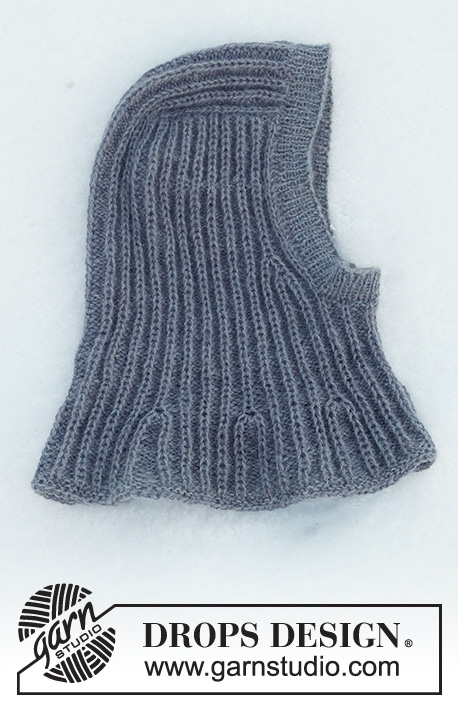

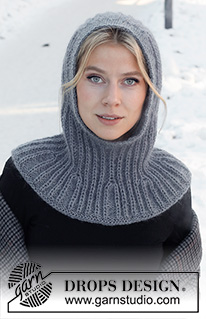
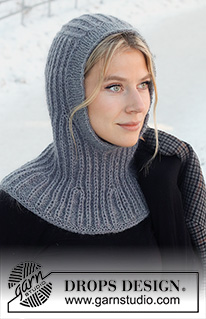
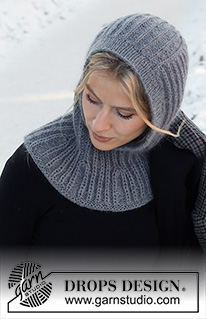
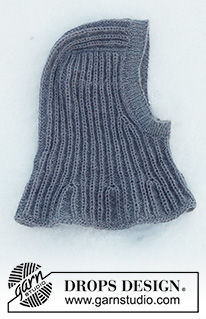











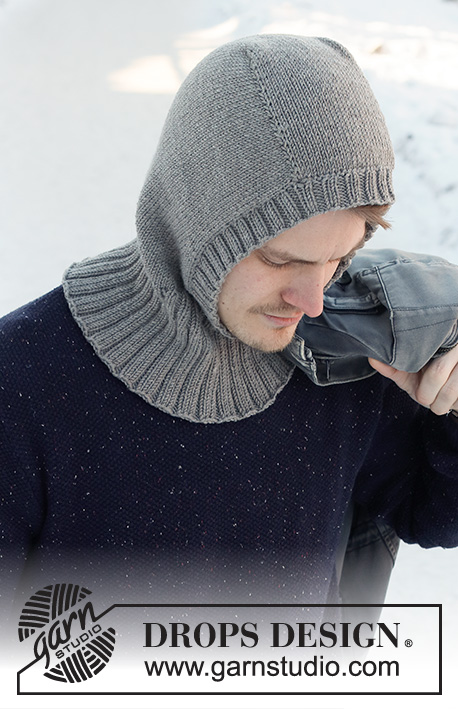
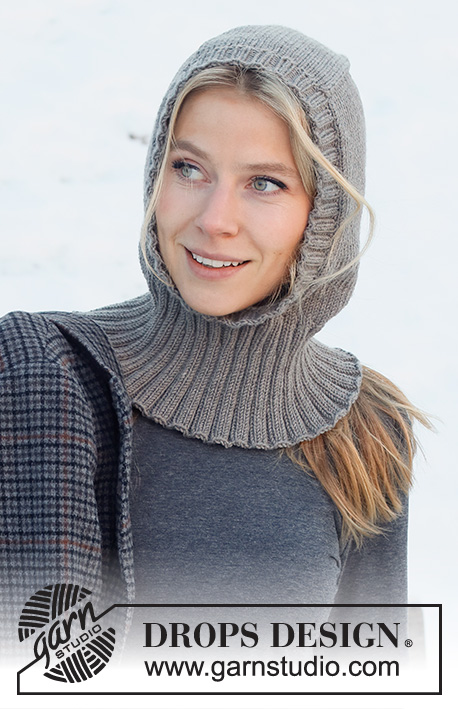
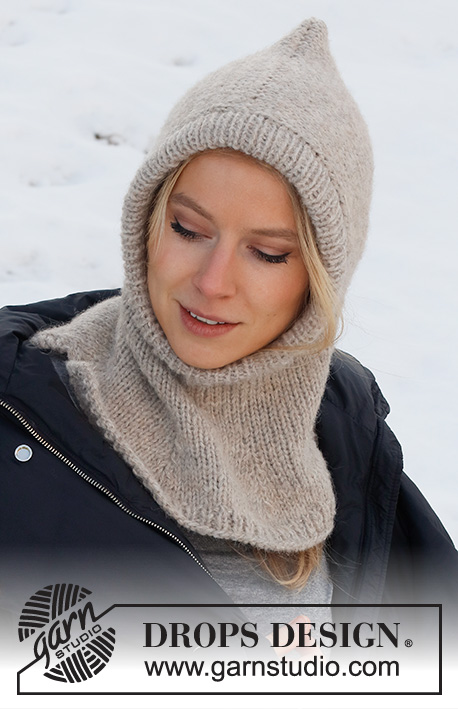

















































Post a comment to pattern DROPS 214-73
We would love to hear what you have to say about this pattern!
If you want to leave a question, please make sure you select the correct category in the form below, to speed up the answering process. Required fields are marked *.